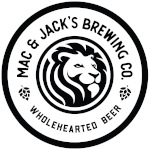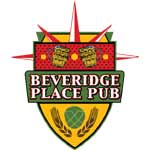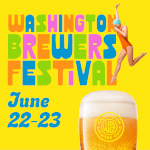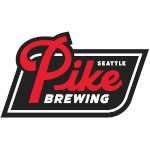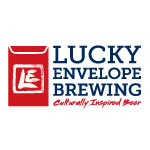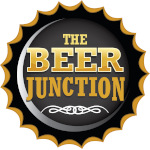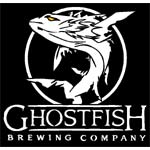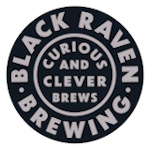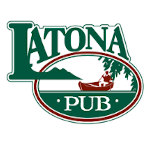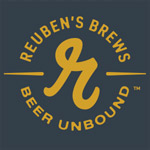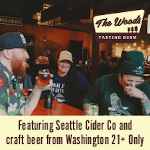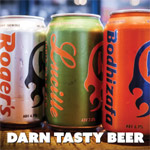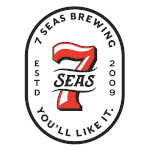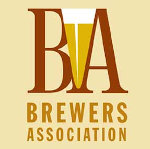Brewers Association adds four new beers to its Beer Style Guidelines
There’s nothing more relaxing than sitting down after a hard day’s work and enjoying a tall, cold glass of Kentucky Common Beer. You do know about KCB, right? How about New Zealand-Style India Pale Ale or Belgian-Style Session Ale? Those are among the new styles the Brewers Association just added to its Beer Style Guidelines. (Above, 12 Gates Brewing’s Common Reactor, Kentucky Common Beer.)
Official beer judging competitions, like the Great American Beer Festival (GABF), rely on the Beer Style Guidelines to categorize and evaluate entries. Obviously, at least I assume it’s obvious, a brewery enters a beer into a competition based on its particular style, or how well they think it fits the criteria for a particular style.
How many different styles are listed in the official Guidelines? Well, a lot. In 2020 judges at the GABF awarded medals in 91 different style categories.
The Latest Additions
- Kentucky Common Beer
- New Zealand-Style Pale Ale
- New Zealand-Style India Pale Ale
- Belgian-Style Session Ale
At the bottom of this article, we provide more info about each, including the official descriptions as they appear in the Style Guidelines.
Why Add More Styles?
“Craft brewers in the U.S. and around the world continue to push the boundaries of beer by reviving long lost styles and by innovating in new beer flavor spaces,” said Chris Swersey, competition manager, Brewers Association. “The 2021 Beer Style Guidelines reflect many exciting trends in brewing with numerous additions and updates for accuracy.”
The addition of the two New Zealand-styles is a good example. I don’t recall exactly but it was about 10 or 12 years ago that Nelson Sauvin hops found their way to American shores, bringing with them a new kind of tropical hop character. Since then, brewers have embraced other hops varieties from New Zealand (Motueka, Rakau, Pacific Gem, and others). The addition of these two styles reflects the current trend, acknowledging that in 2021 there is something about these “New Zealand-style” beers that sets them apart.
For 2021, hundreds of revisions, edits, format changes, and additions were made to this year’s guidelines. In other words, beyond simply adding the new styles, other styles were revised and updated to more accurately reflect today’s brewing environment and today’s beer landscape. A lot of consideration and research goes into any revisions or additions.
“The Brewers Association Beer Style Guidelines are a trusted resource for the brewing industry worldwide,” said Swersey. “The guidelines have fostered a lexicon that has allowed the community of drinkers and brewers to talk about beer and celebrate beer across diverse cultures, around the world.”
According to the Brewers Association, the Beer Style Guidelines reflect, as much as possible, historical significance, authenticity, or a high profile in the current commercial beer market. The addition of a style or the modification of an existing one is not undertaken lightly and is the product of research, analysis, consultation, and consideration of market actualities, and may take place over a period of time. Another factor considered is that current commercial examples do not always fit well into the historical record, and instead represent a modern version of the style.
The New Styles for 2021
Below we share the information about the four style introduced this year. If you are a brewer, or just a real serious beer geek, even more information, the seriously geeky nitty-gritty, can be found in the official guidelines.
New Zealand-Style Pale Ale
Color: Straw to medium amber
Clarity: Yeast, chill and/or hop haze may be present in at low levels but are not essential
Perceived Malt Aroma & Flavor: Very low to medium
Perceived Hop Aroma & Flavor: Medium to medium/high, exhibiting attributes such as tropical fruit, passionfruit, and/or stone-fruit, cut grass and diesel
Perceived bitterness: Low to medium-high
Fermentation Characteristics: Low to medium fruity esters are acceptable but not essential.
Body: Medium-low to medium with a dry finish
Additional notes: Overall impression is a well-integrated easy-drinking, refreshing pale ale style with distinctive fruity hop aromas and flavors. Diacetyl is absent in these beers. DMS should not be present.
New Zealand-Style India Pale Ale
Color: Gold to copper
Clarity: Chill haze is acceptable at low temperatures. Hop haze is allowable at any temperature.
Perceived Malt Aroma & Flavor: Low to medium intensity malt attributes are present in aroma and flavor
Perceived Hop Aroma & Flavor: High to intense, exhibiting attributes such as floral, fruity (tropical, stone fruit and other), sulfur/diesel-like, citrusy, and grassy
Perceived bitterness: Medium-high to very high
Fermentation Characteristics: Fruity esters are low to high, acceptable but not essential.
Body: Medium-low to medium with a dry finish
Additional notes: Diacetyl and DMS should not be present. The use of water with high mineral content may result in a crisp, dry beer rather than a maltaccentuated version. Hop attributes are dominant and balanced with malt character.
Belgian-Style Session Ale
Color: May vary widely
Clarity: Chill haze is acceptable at low temperatures
Perceived Malt Aroma & Flavor: Very low to low
Perceived Hop Aroma & Flavor: Very low to low
Perceived bitterness: Very low to low but sufficient to balance other attributes
Fermentation Characteristics: Phenolic spiciness may be absent or may be present at low levels. Fruity-ester complexity may range from low to medium, in harmony with malt and other attributes. Diacetyl should not be present.
Body: Very low to low
Additional notes: Beers in this category recognize the uniqueness and traditions of Belgian brewing, but do not hew to any other classic or “Other” Belgian-style categories defined in these guidelines. The most notable characteristic that these beers share is a modest alcohol content of 2.1% – 5% abv. These beers can be lower gravity formulations of their own, or can be produced from second run wort from the production of higher gravity beers. Balance is a key component when assessing these beers. Wood- and barrel-aged versions which exhibit attributes of wood aging should be categorized as wood- and barrel-aged beers. Fruited versions are categorized as Belgian-style fruit beers.
When using these guidelines as the basis for evaluating entries at competitions, brewers may be asked to provide supplemental information about entries in this category to allow for accurate evaluation of diverse entries. Such information might include an underlying Belgian beer style not otherwise defined in these guidelines or other information unique to the entry such as ingredients or processing which influence perceived sensory outcomes.
Kentucky Common Beer
Color: Medium to deep amber
Clarity: Chill haze or yeast haze is acceptable
Perceived Malt Aroma & Flavor: Medium-low to medium. Sweet malt is the dominant flavor attribute. Notes of corn, caramel, toffee and/or bread may be present.
Perceived Hop Aroma & Flavor: Low to medium. May exhibit floral or spicy attributes typical of early 20th century North American hop varieties.
Perceived bitterness: Low to medium
Fermentation Characteristics: Low to medium-low fruity esters may be present. Very low levels of DMS, if present, are acceptable. Diacetyl should not be present.
Body: Medium-low to medium with a dry finish enhanced by high carbonation
Additional notes: This American-born regional style proliferated around Louisville, Kentucky, from the Civil War era until Prohibition. Corn grits or flakes were commonly used at a rate or 25-35% of the total grist. Minerally attributes resulted from the use of hard brewing water. These beers were consumed very young, going from brewhouse to consumer in as little as one week. Early 20th century brewing literature mentions a slight tartness developing during fermentation as a characteristic attribute of this style. If tartness is present in modern versions, it should be at very low levels.

